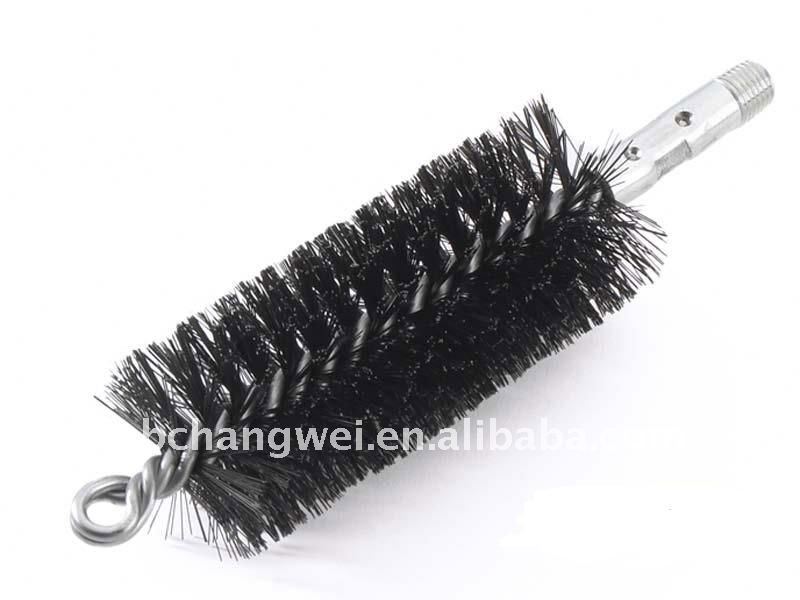Thanks everyone for the great welcome and helping posts.
LDPosse wrote:
I can't tell from the pictures, does the firebox have shaker grates?
I'm not sure what a shaker grate is. Do you mean a grill in the base of the fire that can be shaken to drop the ashes into the ash tray? It doesn't have anything like that. The base of the firebox is a thick iron plate with lots of holes. Twice a day, I have to use a tool that comes with the boiler to clean those holes and help the ashes falling or they will end up blocking most of the air intake.
CoaLen wrote:David,
What kind of coal are you burning, anthracite or bituminous?
How is your furnace vented? (Chimney, power vent, direct vent, etc.)
Do you know what your draft is? This is usually measured with a manometer and is an important tool for correct setup of a coal furnace.
-I'm 95% sure it's anthracite.
-It's using the same chimney that the diesel boiler was using. The technician that installed the coal/wood boiler measured the diameter and cleaned it and he said it was more than enough.
-They didn't used a manometer to measure the draft.
franco b wrote:You say it is OK when burning wood. Wood burning will have higher stack temperature which will create higher draft. I suspect your chimney. Please give a good description of it. The very low temperature you are running the boiler at will also mean low draft. When the boiler is running at that very low temperature I would like to know how far open the air intake is.If it is open any more than a crack then draft is suspect. If it is opened wide then poor draft through the coal bed is certain. Are there dampers of any kind either built into the boiler or between the boiler and chimney? CO is caused by the coal not burning completely. When fully burned it forms CO2. To do that it needs adequate air and temperature throughout the coal bed. Please supply some pictures of the fire box and grates. Most combination units do not have a proper design for burning coal. For that matter most coal burners also do not have ideal design.
If it were mine I would take down the smoke pipe and inspect the chimney and exit from the boiler, and also make sure any clean out doors for the chimney are tight. Do get the CO detector (get two) and forget the mask since the problem must be found.
Well, when I say it's ok when burning wood I mean I don't get any headaches or dizziness when loading with wood, BUT the wood of course generates much much more amount of smoke and I have to be quickly load it and shut the door or I will get smoke coming out.
I want to clear out that I have the problem with the fumes coming out of the boiler only when I'm loading it. If I go back two hours after loading it when the coal has become embers and has a blue flame over it, then I can leave the door open for a while and have no problems.
By damper do yo mean something that partially blocks the smoke on its way out? If so, yes, it has an adjustable one fitted between the boiler and the chimney.
About temperatures, please notice that I'm talking about water temperature measured just after it leaves the boiler on it's way to the house heating circuit.
With wood: When I load it with a good amount of nice dry wood, it quickly raises to 65ºC/150ºF if I leave both air intake and draft open to the max. I usually regulate to keep it between 40 and 50 as it's not being a very cold winter here and it's enough with that, specially since it's burning 24 hrs. a day. The problem with wood is that a whole load only lasts between 2.5 and 5 hours so I have to keep an eye on it more often that I'd like.
With coal is a different story: I usually load it when water is around 40ºC/104ºF and there's still a good thickness of an ember bed. I open both draft and intake to the max and load it with as much coal as I can. Then in about half an hour the temperature drops to 30ºC/86ºF, then it starts to slowly rise and in about 3-4 hours it will reach the maximum, that with coal is about 55ºC/130ºF. This happens if I leave it all open and the grill in the base is well cleaned. At night I usually close intake and draft a bit to keep it under around 35ºC/95ºF as we don't need much heat at night and just by keeping the house mild is enough.
I just filmed a video of the thing working (was outputing 40ºC/104ºF when I did it) so you can see it working, how the draft is made, the coal and everyghing else):
https://www.youtube.com/watch?v=NWt4RYCzbDY&feature=youtu.be





